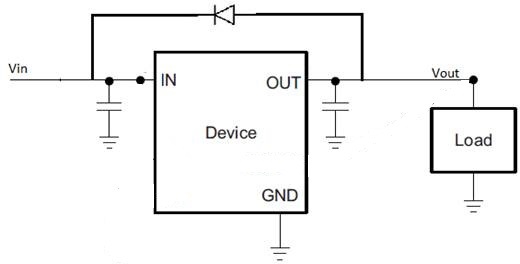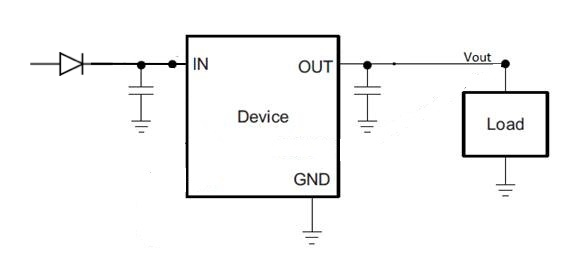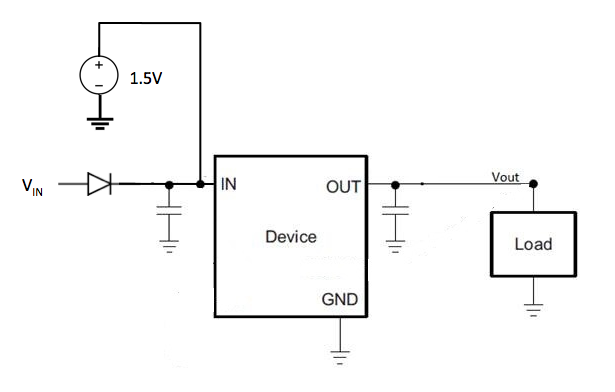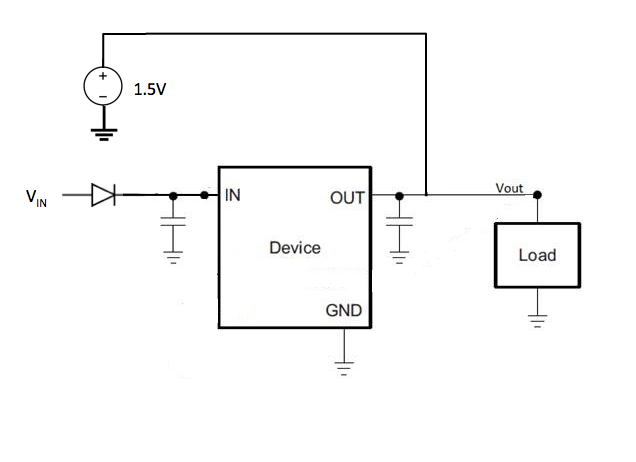Other Parts Discussed in Thread: TPS720
We need to determine if applying voltage from a single AA battery to the output of the LDO, when there is no power or connection applied to the +3.3, would damage the LDO in the following configuration. We have no reported failure, but we need to determine if it is possible to weaken or damage the LDO.
For reference we are using a 1.5 V AA battery to do a quick check in production that the motor is functional. The LDO is a TPS7201Q.
Thanks





